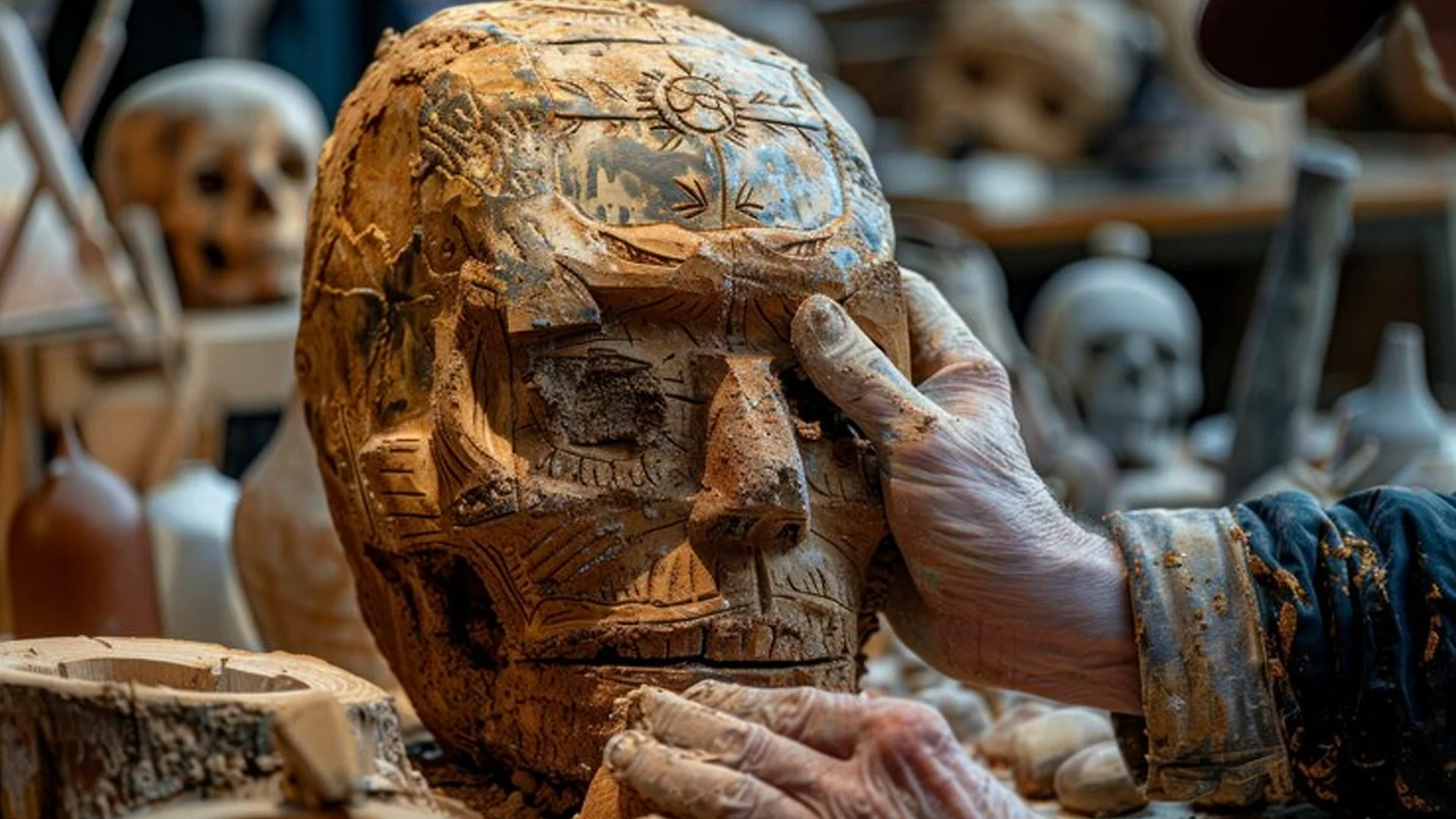Ancient Artz: Unveiling the Timeless Legacy of Ancient Art
The story of human civilization is intricately woven with art, a profound medium of expression that transcends the ages. From prehistoric cave paintings to the architectural marvels of antiquity, ancient art provides us with a glimpse into the cultural, spiritual, and societal values of civilizations that shaped our world. This article delves into the fascinating world of “ancient artz,” exploring its significance, evolution, and ranking some of the most impactful ancient art forms and masterpieces.
What is Ancient Artz?
“Ancient artz” refers to the collective body of visual and material culture produced by civilizations before the Middle Ages, typically considered up to the fall of the Roman Empire. It encompasses a wide array of art forms such as sculpture, painting, pottery, and monumental architecture. Ancient art serves as a crucial window into the past, helping us understand the mindset, creativity, and technological prowess of early human societies. These works are not merely aesthetic—they carry deep symbolic meanings, reflecting religious beliefs, political power, and social hierarchies.
The Evolution of Ancient Artz
The evolution of ancient artz is closely linked to human history, with each period and region producing distinct styles and innovations.
1. Prehistoric Art (circa 40,000 BCE – 10,000 BCE)
One of the earliest forms of human expression, prehistoric art, dates back to the Paleolithic era. This period is most famous for cave paintings found in locations such as Lascaux in France and Altamira in Spain. These paintings often depict animals like bison, horses, and deer, rendered in a naturalistic style. The function of these works remains debated, with theories suggesting they were either for ritualistic purposes or as a means of communication.
- Key Example: The Lascaux Cave Paintings, France
2. Mesopotamian Art (circa 3500 BCE – 539 BCE)
The cradle of civilization, Mesopotamia, produced some of the most significant early art forms. The Sumerians, Akkadians, Babylonians, and Assyrians left behind a treasure trove of artifacts, ranging from cylinder seals to colossal sculptures of winged bulls (lamassu). Mesopotamian art often depicted gods, kings, and mythological creatures, reinforcing the power of the rulers and the divine.
- Key Example: The Standard of Ur, a royal Sumerian artifact made of wood inlaid with shell and lapis lazuli.
3. Ancient Egyptian Art (circa 3100 BCE – 30 BCE)
Perhaps the most instantly recognizable form of ancient artz, Egyptian art is defined by its consistency and its focus on the afterlife. Statues, hieroglyphs, and tomb paintings were all part of an elaborate system designed to ensure a smooth transition to the afterlife for pharaohs and nobles. Egyptian art adhered to strict conventions, with figures portrayed in a stylized form that emphasized order and stability.
- Key Example: The Great Sphinx of Giza, an iconic symbol of ancient Egyptian culture.
4. Aegean and Ancient Greek Art (circa 3000 BCE – 31 BCE)
The art of the Aegean civilizations, including the Minoans and Mycenaeans, laid the groundwork for the classical art of ancient Greece. Greek art evolved from the geometric forms of the early period to the lifelike sculptures of the Classical and Hellenistic periods. The Greeks placed a high value on humanism, balance, and proportion, and their work had a profound influence on Roman and later Western art.
- Key Example: The Parthenon sculptures, Athens, Greece.
5. Ancient Roman Art (circa 753 BCE – 476 CE)
Ancient Roman art borrowed heavily from the Greeks but expanded upon it in new and innovative ways. The Romans were masters of portraiture, creating lifelike busts and statues of emperors, generals, and gods. Roman architecture, especially their use of concrete, allowed for the construction of monumental structures like the Colosseum and the Pantheon.
- Key Example: The Augustus of Prima Porta, a statue of the first Roman emperor.
Ranking of Major Ancient Art Forms
While the entirety of ancient artz is invaluable, certain forms and masterpieces stand out for their innovation, impact on future art, and cultural significance. Below is a ranking of some of the most important and influential forms of ancient art:
1. Sculpture: Timeless Monumentality
Sculpture in the ancient world is arguably the most significant form of ancient art. From the Colossal statues of pharaohs in Egypt to the detailed bronze statues of Greece, ancient civilizations excelled in creating three-dimensional art that still stuns viewers today. These works, whether in stone, bronze, or clay, reflected both the technical prowess of the artists and the cultural values of the societies that produced them.
- Top Masterpiece: Michelangelo’s inspiration likely stemmed from ancient Greek sculptures such as the Venus de Milo (circa 100 BCE), a stunning Hellenistic statue symbolizing beauty and serenity. It remains one of the most iconic sculptures in the world.
2. Architecture: Engineering and Aesthetic Marvels
Ancient architecture was not merely functional; it was a form of art that expressed the power and identity of civilizations. Structures such as the pyramids of Egypt, the Parthenon in Athens, and the Roman Pantheon showcase the architectural ingenuity and aesthetic sensibilities of ancient societies.
- Top Masterpiece: The Great Pyramid of Giza (circa 2580–2560 BCE) in Egypt remains one of the Seven Wonders of the Ancient World, showcasing the architectural mastery of ancient Egypt.
3. Pottery and Ceramics: Everyday Art
Pottery and ceramics served both functional and decorative purposes in the ancient world. The detailed, colorful pottery of ancient Greece, for example, is renowned for its narrative depictions of mythological and everyday scenes. Mesopotamian and Chinese pottery also played a vital role in the development of ancient artz.
- Top Masterpiece: The Terracotta Army (circa 210–209 BCE) in Xi’an, China, is a stunning collection of life-sized pottery soldiers buried with the First Emperor of China to protect him in the afterlife.
4. Painting and Frescoes: Colorful Narratives
While many ancient paintings have been lost to time, those that survive, especially in places like the catacombs of Rome and the villas of Pompeii, offer vivid snapshots of ancient life. Frescoes, mosaics, and wall paintings adorned homes, public spaces, and temples, depicting gods, myths, and everyday life.
- Top Masterpiece: The Frescoes of Pompeii (1st century CE) are remarkably well-preserved, providing a unique insight into Roman life, religion, and aesthetics.
5. Jewelry and Metalwork: Luxury and Status
The ancient art of jewelry-making and metalwork was both a form of self-expression and a symbol of wealth and status. Gold, silver, and bronze were commonly used materials, crafted into intricate designs for royalty and nobility. Egyptian funerary masks, such as the famous Mask of Tutankhamun (circa 1323 BCE), exemplify the sophistication of ancient metalwork.
The Influence of Ancient Artz on Modern Art
The art created by ancient civilizations continues to inspire contemporary artists, architects, and designers. The Renaissance, in particular, marked a revival of Classical Greek and Roman ideals, which remain central to Western art and architecture. Modern-day neoclassical architecture draws heavily from the proportions and designs of ancient temples, while contemporary artists look to the forms and symbols of ancient artz for inspiration in their work.
Moreover, museums around the world, from the British Museum to the Louvre, display ancient art as part of their most prized collections, drawing millions of visitors each year. These artifacts not only offer aesthetic pleasure but also serve as a bridge connecting modern viewers to the distant past.
Conclusion
Ancient artz is more than just a record of human creativity; it is a reflection of our enduring desire to understand the world and communicate with one another across time and space. From the monumental pyramids of Egypt to the exquisite sculptures of Greece and Rome, ancient art continues to shape our understanding of history, culture, and the human experience. As we preserve and study these masterpieces, we keep alive the spirit of the civilizations that came before us, ensuring that their stories—and their art—will never be forgotten.













Post Comment